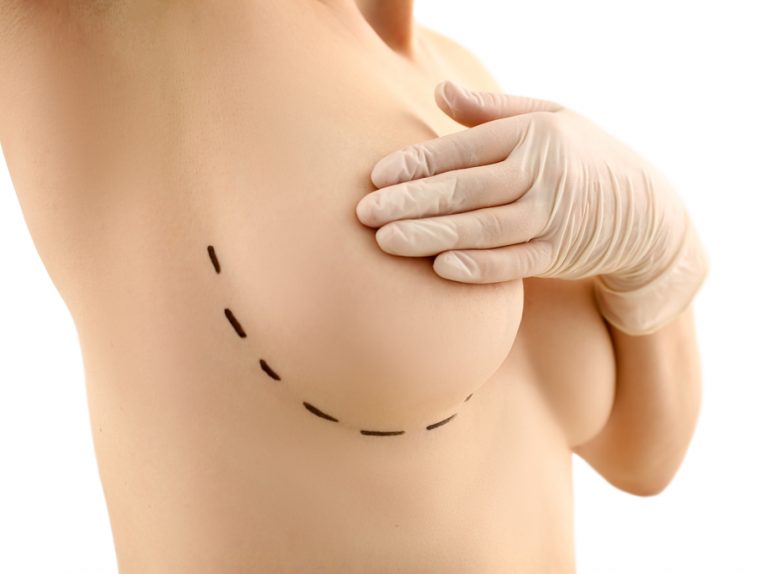The Benefits of Breast Reduction: How to Get a More Comfortable, Confident You
Posted on: February 10, 2023
Table of Contents
- What causes dead tissue and severe wounds in patients who have undergone breast reduction surgery?
- Can chest exercises help to reduce the size of my breasts?
- What can I do to avoid scarring from breast reduction surgery?
- How long will my breasts remain swollen after breast reduction surgery?
- Do I need to have a breast reduction and lift to achieve a lifted look?
- Is it possible to reduce DD breasts to C cups through a combination of breast reduction, lift, and implants?
- Can breast tissue regrow after a breast reduction procedure?
- How long should one wait after surgery to consume alcohol?
- Are there any non-surgical options for breast reduction?
- How long should patients wear a recovery bra after a breast reduction?
- What size breasts would require a reduction?
- What is the most difficult day following the surgery?
- At what age is breast reduction recommended?
What causes dead tissue and severe wounds in patients who have undergone breast reduction surgery?
Dead tissue and severe wounds in patients who have undergone breast reduction surgery can be caused by several factors, including infection, poor wound healing, and trauma to the tissue during the procedure. Poor wound healing can be caused by a variety of factors, such as poor nutrition, smoking, diabetes, and certain medications. Infection can occur if the surgical site is not properly cleaned or if the patient is exposed to bacteria or other pathogens. Trauma to the tissue can occur if the surgeon is too aggressive during the procedure or if the patient has an underlying medical condition that makes them more prone to tissue damage.
Can chest exercises help to reduce the size of my breasts?
No, chest exercises cannot reduce the size of your breasts. The size of your breasts is largely determined by your genetics and hormones. However, chest exercises can help to strengthen the muscles underneath your breasts, which can give your chest area a firmer, more toned look.
What can I do to avoid scarring from breast reduction surgery?
- Follow your surgeon’s post-operative instructions carefully.
- Keep the incision sites clean and dry.
- Avoid strenuous activities and heavy lifting for several weeks after the surgery.
- Apply a topical scar treatment, such as silicone gel or silicone sheets, to the incision sites.
- Wear a supportive bra for several weeks after the surgery.
- Avoid sun exposure on the incision sites.
- Eat a balanced diet with plenty of Vitamin C and zinc to promote healing.
- Massage the scar tissue with a moisturizing cream or lotion.
How long will my breasts remain swollen after breast reduction surgery?
The swelling after breast reduction surgery typically lasts for several weeks. It may take up to two months for the swelling to completely go away.
Do I need to have a breast reduction and lift to achieve a lifted look?
No, you do not need to have a breast reduction and lift to achieve a lifted look. Depending on the size and shape of your breasts, you may be able to achieve a lifted look with other treatments such as breast augmentation or a breast lift without implants. It is important to consult with a board-certified plastic surgeon to determine which procedure is best for you and your desired results.
Is it possible to reduce DD breasts to C cups through a combination of breast reduction, lift, and implants?
Yes, it is possible to reduce DD breasts to C cups through a combination of breast reduction, lift, and implants. The exact procedure will depend on the patient’s individual anatomy and desired outcome, and should be discussed with a board-certified plastic surgeon.
Can breast tissue regrow after a breast reduction procedure?
Yes, breast tissue can regrow after a breast reduction procedure. However, the amount of regrowth varies from person to person and is dependent on factors such as age, genetics, and lifestyle. Additionally, the amount of regrowth is typically not enough to undo the effects of the breast reduction procedure.
How long should one wait after surgery to consume alcohol?
It is recommended that people wait at least two weeks after surgery before consuming alcohol. This is to allow the body to heal and to reduce the risk of complications.
Are there any non-surgical options for breast reduction?
Yes, there are non-surgical options for breast reduction. These include lifestyle changes, such as weight loss, dietary changes, and exercise, as well as medications and natural treatments. Additionally, there are various creams and gels that can be applied topically to reduce the size of the breasts.
How long should patients wear a recovery bra after a breast reduction?
Most patients are advised to wear a recovery bra for at least 6 weeks after a breast reduction. The bra should provide good support and should be worn both day and night. It is important to follow your doctor’s instructions for the best results.
What size breasts would require a reduction?
There is no specific size of breasts that would require a reduction; it is a personal decision. Generally, if a woman is experiencing physical discomfort or psychological distress due to the size of her breasts, she may be a candidate for a breast reduction.
What is the most difficult day following the surgery?
The most difficult day following breast reduction surgery is usually the day after the surgery. This is when the patient will likely experience the most pain, swelling, and discomfort.
At what age is breast reduction recommended?
Breast reduction surgery is typically recommended for adults over 18 years of age. However, some surgeons may consider performing the procedure on younger patients if there are medical indications or if the patient is physically and emotionally mature enough to understand the risks and potential outcomes.





